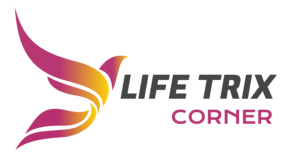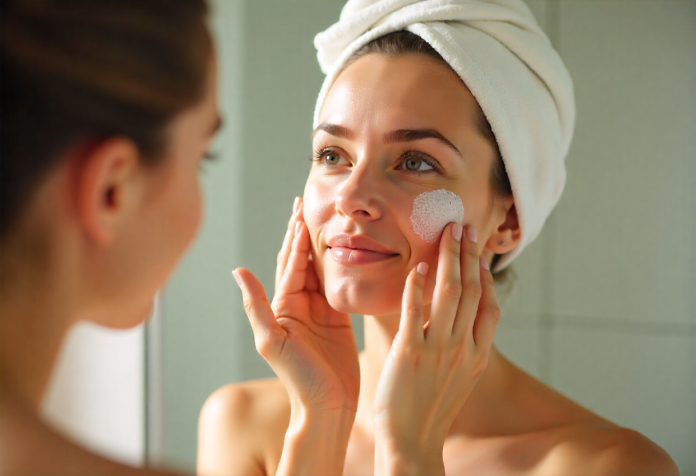Can acne scars truly disappear, or are they permanent reminders of past breakouts? Acne scars form when inflamed acne lesions damage collagen fibers beneath the skin surface, creating permanent textural changes that differ from temporary post-inflammatory hyperpigmentation. Dermatological treatments target these structural changes through controlled injury mechanisms that stimulate collagen remodeling, with treatment selection depending on scar depth, width, and individual skin characteristics.
If you’ve tried home remedies or over-the-counter creams without success, it may be time to consider professional dermatologist singapore clinics offer — procedures performed by dermatologists using precision-controlled energy and tailored protocols to remodel collagen safely and effectively.
Ice pick scars penetrate deep into the dermis with narrow openings, while boxcar scars create broader depressions with defined edges. Rolling scars produce undulating skin texture through fibrous bands tethering the epidermis to deeper structures, requiring different therapeutic approaches than atrophic or hypertrophic variants.
Types of Acne Scars and Their Characteristics
Ice Pick Scars
Ice pick scars appear as narrow, deep punctures extending into the dermis, resembling marks from a sharp instrument. These V-shaped depressions typically measure less than 2mm in diameter but can reach several millimeters deep, making them visible even under indirect lighting. The narrow opening and significant depth create shadows that accentuate their appearance, particularly on the cheeks and forehead, where sebaceous glands concentrate.
Treatment options include approaches that reach the deeper dermal layers. TCA CROSS (trichloroacetic acid chemical reconstruction of skin scars) applies high-concentration acid directly into individual scars, creating controlled chemical injury that stimulates collagen production from the base upward. Punch excision physically removes the entire scar tract, allowing fresh wound healing to create smoother texture.
Boxcar Scars
Boxcar scars create round or oval depressions with sharp vertical edges, resembling chickenpox scars in appearance. These measure 1.5–4mm in diameter with depths ranging from 0.1–0.5mm, creating distinct shadows due to their perpendicular walls. The wider surface area compared to ice pick scars allows for different treatment modalities that address both depth and width simultaneously.
Fractional CO2 lasers create microscopic treatment zones that penetrate 0.5–1.5mm into the dermis, stimulating neocollagenesis while preserving surrounding tissue for rapid healing. The laser energy causes immediate collagen contraction followed by gradual remodeling over 3–6 months, with visible improvement after each session.
Rolling Scars
Rolling scars produce wave-like undulations across the skin surface without distinct edges, caused by fibrous bands anchoring the epidermis to subcutaneous tissue. These bands create a pulling effect that becomes more pronounced with facial expressions, affecting areas spanning several centimeters. The irregular depth and lack of defined borders require treatments that release tethering while stimulating uniform collagen production.
Subcision involves inserting a specialized needle horizontally beneath scars to manually break fibrous attachments, immediately releasing the depressed areas. Blood accumulation in the created pocket prevents re-adhesion while promoting collagen formation. Multiple sessions spaced 4–6 weeks apart progressively improve skin contour.
Treatment Options
Fractional Laser Resurfacing
Fractional lasers deliver controlled thermal injury in microscopic columns while leaving intervening tissue intact, enabling rapid re-epithelialization within 24–48 hours. CO2 lasers penetrate 0.5–2mm deep with adjustable density coverage from 5–40% per pass, creating heat-induced collagen remodeling that continues for months post-treatment. Erbium:YAG lasers offer more superficial ablation with less thermal damage, suitable for mild scarring or darker skin types.
Treatment protocols vary based on scar severity and skin type. Settings with higher coverage and deeper penetration address severe scarring but require 5–7 days downtime with significant erythema and edema. Conservative parameters using lower coverage minimize recovery to 2–3 days while requiring additional sessions for comparable results.
Non-ablative fractional lasers like 1550nm erbium-doped fiber lasers heat dermal tissue without removing the epidermis, reducing downtime to mild erythema lasting 1–2 days. These require more sessions compared to ablative treatments but suit patients unable to accommodate extended recovery periods.
Chemical Peels for Scar Improvement
Chemical peels remove damaged skin layers through controlled chemical exfoliation, with depth determined by acid concentration, pH, and application time. Superficial peels using glycolic acid or salicylic acid improve mild textural irregularities and hyperpigmentation through repeated monthly applications. Medium-depth peels combining Jessner’s solution with TCA penetrate to the papillary dermis, addressing moderate scarring with 7–10 days of visible peeling.
TCA CROSS technique applies concentrated TCA focally to individual scars using a toothpick or needle tip, creating localized frosting that indicates protein coagulation. The concentrated application spares surrounding tissue while creating deep dermal injury within scars, stimulating collagen production from the base. Treatment intervals of 6–8 weeks allow complete healing between sessions, with gradual elevation of depressed scars over multiple treatments.
Phenol peels provide the deepest penetration but require cardiac monitoring and extended recovery of 2–3 weeks with significant crusting and erythema. These address severe scarring in single treatments but carry higher risks including permanent hypopigmentation and demarcation lines.
Microneedling and Radiofrequency
Microneedling creates controlled micro-injuries using needles ranging from 0.5–3mm length, with deeper penetration for scar treatment compared to general rejuvenation. The mechanical trauma triggers wound healing cascades including growth factor release, neovascularization, and collagen type III to type I conversion. Devices achieve consistent depth and density, with adjustable speed and needle configuration for customized treatment.
Radiofrequency microneedling combines mechanical injury with thermal energy delivered through insulated needles, creating coagulation zones at predetermined depths while protecting the epidermis. The bipolar energy heats tissue to 60–70°C, causing immediate collagen contraction and long-term remodeling. Settings adjust needle depth (0.5–3.5mm), energy level, and exposure time based on scar characteristics.
Treatment protocols typically involve multiple sessions at 4–6 week intervals, with topical anesthesia applied 30–45 minutes before procedures. Post-treatment erythema resembles moderate sunburn for 24–48 hours, with potential pinpoint bleeding and mild swelling that resolves within 3 days.
Combination Therapy Approaches
Sequential combination treatments address different scar components. Subcision releases tethered scars before laser resurfacing smooths surface irregularities, preventing re-adhesion while optimizing laser penetration. The 4–6 week interval between subcision and laser treatment allows initial healing while maintaining tissue mobility.
Alternating treatment modalities prevents plateau effects while targeting multiple pathological processes. Fractional laser sessions alternate with microneedling at 4-week intervals, varying the stimulus to maintain healing responses. Chemical peels between laser treatments address superficial pigmentation while maintaining collagen stimulation momentum.
Same-day combinations leverage synergistic effects of multiple modalities. Microneedling followed immediately by platelet-rich plasma application delivers growth factors directly to treatment channels, enhancing healing and collagen production. Low-level laser therapy post-microneedling reduces inflammation while stimulating cellular metabolism through photobiomodulation at 630–840nm wavelengths.
Pre and Post-Treatment Care
Pre-treatment preparation may help with outcomes while minimizing complications:
- Tretinoin 0.025–0.05% may be considered for nightly application, though the appropriate duration and timing should be determined by a healthcare professional
- Hydroquinone 4% may be used to reduce post-inflammatory hyperpigmentation risk in susceptible individuals
- Sun protection using broad-spectrum SPF 30–50 can help prevent UV-induced inflammation
- Physical blockers containing zinc oxide or titanium dioxide provide protection without chemical absorption concerns post-procedure
Post-treatment protocols vary by modality intensity. Ablative procedures may require occlusive ointments like petroleum jelly to maintain moisture and prevent crust formation. Gentle cleansing with lukewarm water and fingertip pressure can help avoid mechanical trauma. Growth factor serums and ceramide-based moisturizers may support barrier restoration after re-epithelialization.
Non-ablative treatments allow lighter post-care using hyaluronic acid serums and mineral sunscreens. A healthcare professional may advise avoiding actives like retinoids, acids, and vitamin C temporarily to prevent irritation.
💡 Did You Know?
Acne scar formation depends more on inflammation duration than acne severity—prolonged inflammation even from mild acne can create permanent scarring through sustained collagen degradation, while severe but quickly resolved acne might leave minimal scarring.
What Our Dermatologist Says
Acne scar treatment requires realistic expectations, as collagen remodeling continues for 6–12 months after procedures. Initial improvements appear within 4–6 weeks as inflammation resolves and early collagen deposition occurs, but final results develop gradually through ongoing tissue reorganization.
Patient selection influences recommendations beyond scar characteristics alone. Active lifestyles limiting downtime favor non-ablative approaches, while single aggressive treatments suit those able to accommodate extended recovery. Darker skin types benefit from conservative parameters with longer wavelengths to minimize pigmentation risks.
Treatment timing considers seasonal factors, with autumn and winter preferred for aggressive resurfacing to minimize sun exposure during healing. Active acne requires control before scar treatment to prevent new scars and reduce infection risk.
Putting This Into Practice
- Document your scars with consistent lighting and angles before starting treatment
- Schedule treatments during recovery windows suited to downtime tolerance
- Establish a maintenance routine using retinoids and sun protection between sessions
- Keep treated areas hydrated with fragrance-free, ceramide-rich moisturizers
- Avoid new acne formation by maintaining a balanced skincare and lifestyle routine
When to Seek Professional Help
- Scars visible under normal lighting
- Persistent textural irregularities
- Mixed scar types or pigmentation
- Active acne concurrent with scarring
- Failed over-the-counter or home treatments
- Emotional distress from visible scarring
Commonly Asked Questions
How many sessions will I need for acne scar improvement?
Mild scarring often needs several non-ablative sessions, while severe scarring may require fewer but stronger ablative treatments. Maintenance every 6–12 months sustains results.
Can I treat acne scars while still breaking out?
Active acne must be managed first to prevent new scars and infection during procedures.
What’s the difference between acne marks and scars?
Marks are flat pigment changes that fade; scars alter skin texture and require professional correction.
Will scars come back after treatment?
Treated scars stay improved, but new breakouts can form new scars. Continued acne control is key.
Next Steps
Successful acne scar treatment combines accurate scar classification with appropriate technique selection. Professional evaluation determines the best combination of modalities, with results improving as collagen remodeling continues over time.
If you’re struggling with uneven texture or persistent depressions from acne, consult a dermatologist specializing in acne scar treatment Singapore patients trust to achieve smoother, more refined skin.















